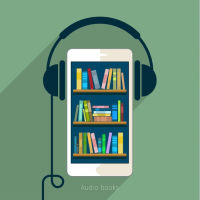Have you started reading or listening to eMedia titles in the past few years? Is Libby your new best friend? If you use eBooks or eAudios, you may wonder about how the library selects and manages those collections. While eMedia collections are similar to our print collections in that there are real live librarians behind the scenes who are selecting what titles we purchase, there are also many unique challenges to these types of collections. Here are some of the questions that we’ve gotten about our eMedia collections.
Sometimes I see that there are 100+ copies of a title available all at once! Why don’t you have that for the most popular titles that have so many holds?
Publishers control what kind of access libraries will have to each title. When there is a way for more people to read/listen to a very popular title at the same time, we take advantage of it, but this kind of access is usually time limited and can be very expensive. This option is also very rare for brand new titles. Our staff need to be strategic with their time and our budget in order to manage this type of access. Most eMedia titles are sold to us in a “one user at a time per each copy” model.
How do you decide when to purchase more copies of an eMedia title?
Additional copies are purchased when a title exceeds our holds ratio - meaning there are more holds per copy than our target number. Holds ratios can vary by collection, but we try our best to keep wait times as low as possible within our limited budget. Holds ratios for print books are generally lower because of the lower cost of print titles. Therefore, wait times for print will generally be shorter. Our staff typically purchases added copies of eMedia titles to meet the holds ratio once per week.
Thanks to Strong Library, Strong Denver, made possible by the Denver Public Library Fund, we have been able to remove the 100 copy cap we had previously imposed on eMedia titles, so we are able to keep even very popular titles within the holds ratio.
Why don’t we own certain titles in eBook or eAudio format?
Not all titles are available in eMedia formats for libraries. For example, Amazon/Audible exclusives are not available for us to purchase, as well as titles from certain publishers.
Aren’t eBooks cheaper than print? Why don’t we have more copies of eBooks than we do in print?
Consumer eBooks can be inexpensive, but libraries can pay up to 3-5+ times the cost of consumer pricing. The average price of a library eBook is $65+ and an eAudiobook is $100+. DPL pays less than $15 on average for a hardcover book.
If the book is electronic, why can’t it be distributed more widely?
Digital rights management (DRM) controls the copyright protection for digital media. When a library purchases an eBook, we are basically purchasing a license to that book. If we want more than one copy, we purchase additional licenses. It’s very much like purchasing multiple copies of a print book. The biggest difference is that most eBooks expire, making it difficult to have a consistent, curated collection. Readers can help us increase checkouts by returning books when they are done rather than waiting for their checkout to expire.
The library used to have an eMedia title that I checked out before. Why can't I find it now?
As with print books, sometimes an eMedia title is no longer available to repurchase. In these cases, once the licenses we've already purchased expire, the library loses access to that title. Selectors use similar criteria that are used with our print collection to select and manage our eMedia collections. Even if some titles remain available to purchase, we don't have an unlimited budget, and need to let go of some underused titles to accommodate new ones.
Want to learn more about how libraries are advocating for better ways of providing eMedia collections? Check out the American Library Association’s Advocacy page for information and ways you can get involved!
